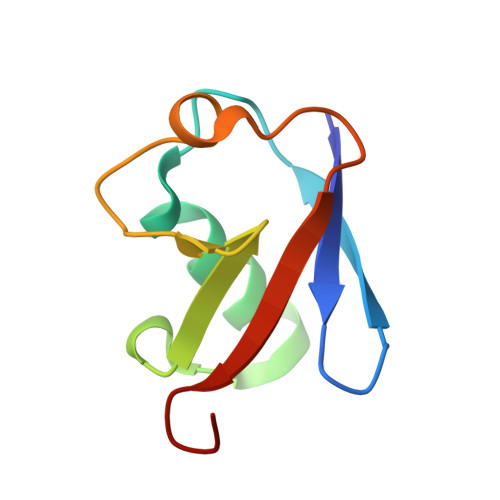Mechanism of Lys6 poly-ubiquitin specificity by the L. pneumophila deubiquitinase LotA.
Warren, G.D., Kitao, T., Franklin, T.G., Nguyen, J.V., Geurink, P.P., Kubori, T., Nagai, H., Pruneda, J.N.(2023) Mol Cell 83: 105-120.e5
- PubMed: 36538933
- DOI: https://doi.org/10.1016/j.molcel.2022.11.022
- Primary Citation of Related Structures:
7UYG, 7UYH - PubMed Abstract:
The versatility of ubiquitination to control vast domains of eukaryotic biology is due, in part, to diversification through differently linked poly-ubiquitin chains. Deciphering signaling roles for some chain types, including those linked via K6, has been stymied by a lack of specificity among the implicated regulatory proteins. Forged through strong evolutionary pressures, pathogenic bacteria have evolved intricate mechanisms to regulate host ubiquitin during infection. Herein, we identify and characterize a deubiquitinase domain of the secreted effector LotA from Legionella pneumophila that specifically regulates K6-linked poly-ubiquitin. We demonstrate the utility of LotA for studying K6 poly-ubiquitin signals. We identify the structural basis of LotA activation and poly-ubiquitin specificity and describe an essential "adaptive" ubiquitin-binding domain. Without LotA activity during infection, the Legionella-containing vacuole becomes decorated with K6 poly-ubiquitin as well as the AAA ATPase VCP/p97/Cdc48. We propose that LotA's deubiquitinase activity guards Legionella-containing vacuole components from ubiquitin-dependent extraction.
- Department of Molecular Microbiology & Immunology, Oregon Health & Science University, Portland, OR 97239, USA.
Organizational Affiliation:

















